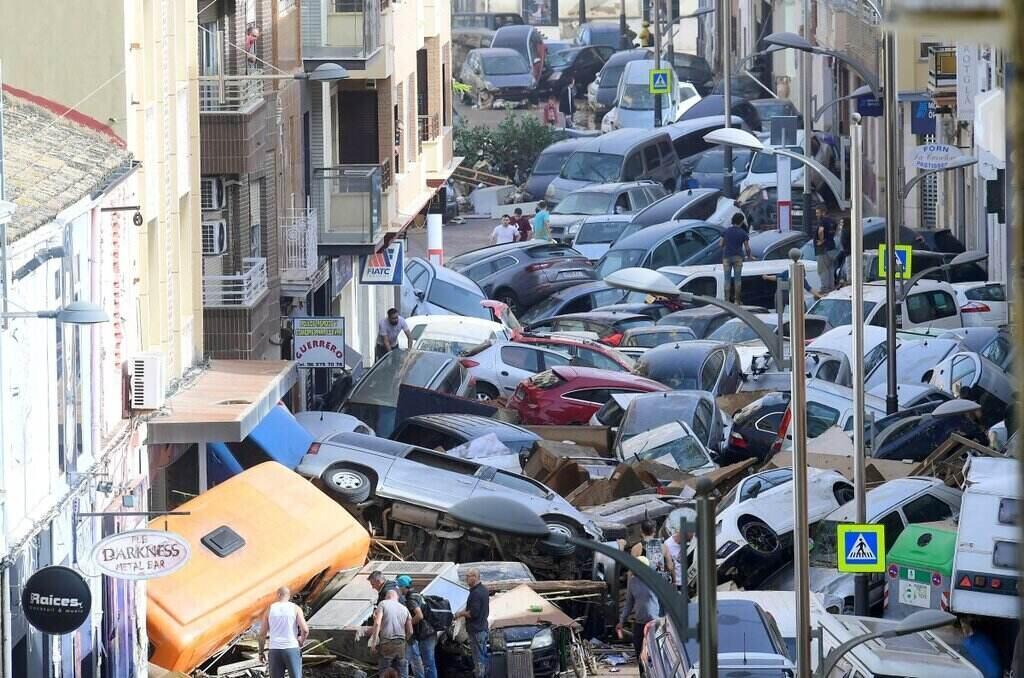Weather experts said a year's worth of rain fell in eight hours in some areas of Valencia on October 29, causing traffic jams on highways and submerging farmland in a region that produces two-thirds of Spain's citrus fruit.
In the worst-hit areas of Spain's historic floods, people climbed on top of their cars as torrents of water swept through the streets, uprooting trees and sweeping away everything in their path.
Defense Minister Margarita Robles told Cadena Ser radio that a military unit specializing in rescue operations would begin using sniffer dogs to sift through mud and debris in the worst-hit areas on October 31.

Asked if the death toll from the natural disaster was likely to rise, she said: “Unfortunately, we are not optimistic.” She said rescue teams had brought along 50 mobile morgues.
Helicopter footage taken by rescue workers showed collapsed bridges and cars and trucks piled up on highways amid flooded fields outside the city of Valencia.
Trains to Madrid and Barcelona were canceled due to flooding. Schools and other non-essential services were suspended in the worst-hit areas. Electricity company i-DE said about 150,000 customers in Valencia were without power.

Some areas of Valencia, such as the towns of Turis, Chiva and Bunol, recorded more than 400mm of rain, prompting the state weather agency AEMET to issue a red alert on October 29. The alert level was downgraded to yellow alert on October 30 when the rain eased.
Flooding has also occurred in other parts of Spain, including Andalusia. Forecasters warn of further deterioration as the storm moves northeast.
The death toll from Spain's current floods is seen as the highest in Europe since at least 185 people died in floods in Germany in 2021.
It is also the deadliest flood-related disaster in Spain since 1996, when 87 people died near a town in the Pyrenees.









